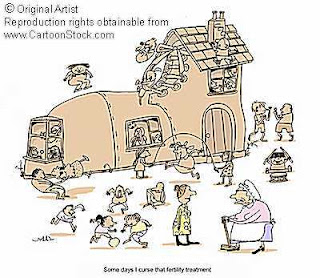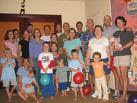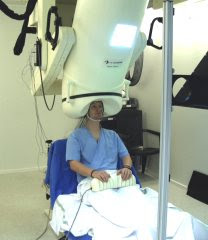Pregnancy time line
Dear first polimodal girls
Welcome to Child Development.
Follow the time line and find out what happens in the womb.
Wednesday, February 25, 2009 | | 0 Comments
Challenge your senses Second polimodal Humanities
Do yoy always believe what you see'?
In this BBC test and the optical illusions you can make up your mind.
To discuss in class.
Monday, February 23, 2009 | | 0 Comments
perception
http://www.exploratory.com/illusions/flash/index.htm
Monday, February 23, 2009 | | 0 Comments
family types Practical work 1st polimodal students
Look at these photographs and identify the types of families. What advantages and disadvantages can you find of each?
Sunday, February 22, 2009 | | 0 Comments
Practical assignment psychology 2nd pol Humanities
What laws of perception are being followed in each of these imagines. Name and explain. Find one other example of each of these laws.




Saturday, February 21, 2009 | | 0 Comments
Autism Definition and signs
Autism is a complex developmental disability that typically appears during the first three years of life and affects a person’s ability to communicate and interact with others. Autism is defined by a certain set of behaviors and is a "spectrum disorder" that affects individuals differently and to varying degrees. There is no known single cause for autism, but increased awareness and funding can help families today.
In February 2007, the Centers for Disease Control and Prevention issued their ADDM autism prevalence report. The report, which looked at a sample of 8 year olds in 2000 and 2002, concluded that the prevalence of autism had risen to 1 in every 150 American children, and almost 1 in 94 boys. The issuance of this report caused a media uproar, but the news was not a surprise to ASA or to the 1.5 million Americans living with the effects of autism spectrum disorder. Nonetheless, the spotlight shown on autism as a result of the prevalence increase opens opportunities for the nation to consider how to serve these families facing a lifetime of supports for their children.
Currently, ASA estimates that the lifetime cost of caring for a child with autism ranges from $3.5 million to $5 million, and that the United States is facing almost $90 billion annually in costs for autism (this figure includes research, insurance costs and non-covered expenses, Medicaid waivers for autism, educational spending, housing, transportation, employment, in addition to related therapeutic services and caregiver costs).
Know the Signs: Early Identification Can Change Lives
Autism is treatable. Children do not "outgrow" autism, but studies show that early diagnosis and intervention lead to significantly improved outcomes.
Here are some signs to look for in the children in your life:
Lack of or delay in spoken language
Repetitive use of language and/or motor mannerisms (e.g., hand-flapping, twirling objects)
Little or no eye contact
Lack of interest in peer relationships
Lack of spontaneous or make-believe play
Persistent fixation on parts of objects
Last updated: 21 January 2008
Thursday, February 19, 2009 | | 1 Comments
William C. Dement Study on Sleep

William C. Dement, MD, PhD is the world's leading authority on sleep, sleep deprivation, and the diagnosis and treatment of sleep disorders.
Biography
In 1970, he founded the world's first sleep disorders center at Stanford University. In 1975, he launched the American Sleep Disorders Association (now American Academy of Sleep Medicine) acting as President during its first twelve years. Dr. Dement is the founder of the American Board of Sleep Medicine which examines and certifies physicians who wish to specialize in sleep medicine. He is co-editor of the definitive sleep medicine textbook, “Principles and Practice of Sleep Medicine,” and founding co-editor of the premier scientific journal, “Sleep.” Since 1971, Dr. Dement has taught the popular “Sleep and Dreams” course at Stanford University and has written the first undergraduate textbook on this topic. Dr. Dement also served as chairman of the congressionally mandated National Commission on Sleep Disorders Research whose study and recommendations led directly to the creation of a new agency within the National Institutes of Health, the National Center on Sleep Disorders Research.
In addition, to his scientific and academic achievements, Dr. Dement serves as Chief Scientific Advisor to SleepQuest and continues to research the effect early detection and comprehensive treatment of Sleep Apnea can have on lowering overall healthcare utilization and costs.
He lives with his family on the campus of Stanford University and is dedicated to supporting family physicians who annually screen patients about their sleep health.
Dr. Dement's Top Initiatives:
Create measurable progress toward public awareness concerning sleep. Create age appropriate curriculum and ensure mandatory inclusion in grade school, high school and college curriculums.
Require mandatory, in-depth training for the most common sleep disorders and their relationship to other co-morbidities and symptoms. Create measurable progress concerning how primary care physicians conduct medical appointments for their knowledge as well as behavior toward sleep disorders; to cause higher identification of afflicted patients.
Identify all very severe obstructive sleep apnea patients and assure that they are treated successfully.
Improve timely access for the diagnosis of sleep disorders by allowing the 80% of people who do not live near a sleep specialist, to be able to choose ambulatory sleep testing as a viable diagnostic tool.
Make the public aware that "drowsiness is red alert!" — so that each person becomes knowledgeable of their own fatigue limits.
Thursday, February 19, 2009 | | 0 Comments
Emotional states
 What do you think of these pictures?
What do you think of these pictures?
When we get to Schaster and Singer we will learn something about all this. Does the brain have anything to do with this?
Wednesday, February 18, 2009 | | 0 Comments
Split brain experiments
The Split Brain Experiments
Background
Nobel Laureate Roger Sperry.
In the 19th century, research on people with certain brain injuries, made it possible to suspect that the "language center" in the brain was commonly situated in the left hemisphere. One had observed that people with lesions in two specific areas on the left hemisphere lost their ability to talk, for example.
The final evidence for this, however, came from the famous studies carried out in the 1960s by Roger Sperry and his colleagues. The results of these studies later led to Roger Sperry being awarded the Nobel Prize in Physiology or Medicine in 1981. Sperry received the prize for his discoveries concerning the functional specialization of the cerebral hemispheres. With the help of so called "split brain" patients, he carried out experiments (just like the one you can perform by yourself in the Split Brain Experiments Game), and for the first time in history, knowledge about the left and right hemispheres was revealed.
What Does "Split Brain" Mean?
In the 1960s, there was no other cure for people who suffered from a special kind of epilepsy than by cutting off the connection, corpus callosum, between the two hemispheres. Epilepsy is a kind of storm in the brain, which is caused by the excessive signaling of nerve cells, and in these patients, the brain storm was prevented from spreading to the other hemisphere when the corpus callosum was cut off. This made it possible for the patients to live a normal life after the operation, and it was only when carrying out these experiments one could notice their somewhat "odd behavior."
Each hemisphere is still able to learn after the split brain operation but one hemisphere has no idea about what the other hemisphere has experienced or learned. Today, new methods and technology in split brain operation make it possibleto cut off only a tiny portion and not the whole of the corpus callosum of patients.
What Came Out of the Split Brain Experiments?
Right vision field is connected to the left hemisphere. Left vision field is connected to the right hemisphere.
The studies demonstrated that the left and right hemispheres are specialized in different tasks. The left side of the brain is normally specialized in taking care of the analytical and verbal tasks. The left side speaks much better than the right side, while the right half takes care of the space perception tasks and music, for example. The right hemisphere is involved when you are making a map or giving directions on how to get to your home from the bus station. The right hemisphere can only produce rudimentary words and phrases, but contributes emotional context to language. Without the help from the right hemisphere, you would be able to read the word "pig" for instance, but you wouldn't be able to imagine what it is.
"The great pleasure and feeling in my right brain is more than my left brain can find the words to tell you."
Roger Sperry
Wednesday, February 18, 2009 | | 0 Comments
Sleep and sleep cycles

Although we view sleep as an escape from the activity of the day, sleep is a fairly active process itself. Throughout a healthy night's sleep, structures in the hypothalamus and brain stem cycle repeatedly through five stages characterized by different brain waves produced during the cycles. The five cycles can be broken up into two main categories: REM (rapid eye movement) and non-REM (slow wave) sleep cycles (Waxman, 2003). This web page will focus on REM and non-REM sleep, but for more information on the specifics of the four sleep cycles, visit http://www.medicinenet.com/sleep/article.htm.
REM sleep, the most crucial part of the sleep cycle (studies have shown that rats deprived of REM sleep have prolonged learning and memory difficulties (Kim et al., 2005), occurs 70 to 90 minutes after falling asleep. REM sleep is initiated by dorsal midbrain and pontine tegmentum neurons. During the REM cycle, sometimes referred to paradoxical sleep, the locus ceruleus releases norepinephrene, a neurotransmitter in the brain that affects food intake, levels of arousal, and mood (Kalat, 2004). The brain then produces delta waves, waves nearly identical to ones observed when a person is awake (Figure 2). Along with a shift in brain waves, often heart rate and blood pressure increase, intense visual imageries (dreams) occur, and muscles can often become temporarily paralyzed. Narcoleptics still experience REM sleep, but instead of entering sleep at stage one and progressing to REM sleep, they often instantly enter REM sleep upon falling asleep. This sudden loss of consciousness and muscle control endangers narcoleptics and sometimes those around them (MedicineNet, 2005).
Figure 2. Brain waves collected by an electroencephalograph (EEG). Notice the similarity between the awake, alert waves and REM sleep waves. Permission pending, http://sun.science.wayne.edu/~bio340/StudentPages/Soliman/physweb.html
As stated previously, the hypothalamus is a structure in the brain that regulates the onset of sleep stages. Within the hypothalamus, hypocretins reside in cells and possibly aid in regulating the neurons involved in REM sleep. Some researchers believe that when Hcrtr2 is stimulated in humans with normal sleep patterns, hypocretins promote wakefulness and repress REM sleep. However, in narcoleptics, a mutation in Hcrtr2 disables this pathway, allowing the sudden onset of REM sleep (http://www.healthgene.com/canine/C110.asp).
Wednesday, February 18, 2009 | | 2 Comments
Scans

Magnetic Resonance Imaging (MRI) is a special type of procedure that allows a doctor to see what is happening inside your child's body. Unlike X-rays, the MRI scanner uses a magnetic field and radio waves to produce very clear and detailed pictures of parts of the body, such as the head, heart, chest, abdomen, pelvis, spine and extremities. MRI gathers soft tissue images and is used to evaluate function and structure of organs and to distinguish normal, healthy tissue from tissues that may need to be studied for disease.
Position Emission Tomography (PET) measures emissions from radioactively-labeled chemicals that have been injected into the bloodstream, and uses the data to produce images of the distribution of the chemicals in the body.
In drug abuse research, PET is being used for a variety of reasons including: to identify the brain sites where drugs and naturally occurring neurotransmitters act; to show how quickly drugs reach and activate receptors; to determine how long drugs occupy these receptors; and to find out how long they take to leave the brain. PET is also being used to show brain changes following chronic drug abuse, during withdrawal from drug use, and during the experience of drug craving. In addition, PET can be used to assess the effects of pharmacological and behavioral therapies for drug addiction on the brain.
What is MEG?
Marker coils placed on volunteer's head
Magnetoencephalography (MEG) is a non-invasive neurophysiological technique that measures the magnetic fields generated by neuronal activity of the brain. The spatial distributions of the magnetic fields are analyzed to localize the sources of the activity within the brain, and the locations of the sources are superimposed on anatomical images, such as those obtained through MRI, to provide information about both the structure and function of the brain.
Wednesday, February 18, 2009 | | 0 Comments
'Clear smoking link' to cot death
The Bristol University team said the risk also increased with every hour babies were exposed to passive smoke after birth.
The number of cot deaths has fallen, but those linked to smoking have risen.
The report, to be published in the journal Early Human Development, suggests public smoking bans will make people more likely to smoke at home.
Many other studies have shown a clear link between smoking and cot death, but the Bristol research tries to unravel more precisely the cost of smoking both before and after birth.
Smoking among pregnant women has fallen from 30% to 20% in the last 15 years.
Back sleeping
The experts found that the proportion of babies who went on to die from Sudden Infant Death Syndrome (SIDS) who were born to mothers who smoked during pregnancy had risen from 57% to 86%.
This, they say, is mostly due to the success of campaigns to lay babies on their backs to sleep, which is credited with preventing hundreds of cot deaths.
The remaining cot deaths are now much more likely to be due to smoking.
The report, from the university's Institute of Child Life and Health, said that fresh messages about the dangers of smoking while pregnant had to be given to women.
Lead author Professor Peter Fleming said: "What we have been trying to do is look at the whole impact of exposure, both before and after birth, to smoking and its adverse effects.
"After delivery, the mother can reduce the risk by protecting her baby and not smoking near it."
Hour by hour
He found that for every hour a newborn was exposed to tobacco smoke, the risk increased.
"We found a perfectly linear relationship," said Professor Fleming.
"The risk of death increased with each individual hour the baby was exposed to smoke.
"For example a baby exposed to smoke eight hours a day was eight times more likely to die from SIDS than a baby that was never exposed. These are startling statistics."
He said that although the recent introduction of smoking bans in public buildings led to a "potential increase" in smoking at home, the findings might send an "encouraging" message.
"What it is saying to parents as a positive message is 'even if you can't give up smoking, don't smoke around the baby'."
Professor George Haycock, from the Foundation for the Study of Infant Deaths said: "The figures show that maternal smoking is now the most important avoidable risk factor for Sudden Infant Death Syndrome (SIDS).
"If no women smoked in pregnancy, about 60% of cot deaths could be avoided. This means that in the UK the number of deaths could fall from around 300 a year to 120 a year."
Story from BBC NEWS:
http://news.bbc.co.uk/go/pr/fr/-/2/hi/health/7045230.stm
Published: 2007/10/15 12:18:11 GMT
Tuesday, February 10, 2009 | | 2 Comments
Child Development Links
Pages
Blog Archive
-
▼
2009
(52)
-
▼
February
(14)
- Motor development
- Pregnancy time line
- Challenge your senses Second polimodal Humanities
- perception
- family types Practical work 1st polimodal students
- Practical assignment psychology 2nd pol Humanities
- Assignment number 1 Scans
- Autism Definition and signs
- William C. Dement Study on Sleep
- Emotional states
- Split brain experiments
- Sleep and sleep cycles
- Scans
- 'Clear smoking link' to cot death Almost nine out...
-
▼
February
(14)





















